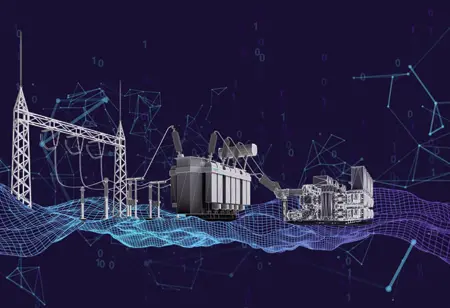Thank you for Subscribing to Electrical Business Review Weekly Brief
I agree We use cookies on this website to enhance your user experience. By clicking any link on this page you are giving your consent for us to set cookies. More info
Electric Motors: The Green Heart of Renewable Energy Infrastructure
As the world strives to reduce its reliance on fossil fuels, the role of electric motors in driving the growth of renewable energy projects, particularly wind turbines.

By
Electrical Business Review | Thursday, September 28, 2023
Stay ahead of the industry with exclusive feature stories on the top companies, expert insights and the latest news delivered straight to your inbox. Subscribe today.
In the ongoing global pursuit of sustainable energy solutions, electric motors have emerged as silent heroes, powering the transformation of renewable energy systems.
FREMONT, CA: As the world strives to reduce its reliance on fossil fuels, the role of electric motors in driving the growth of renewable energy projects, particularly wind turbines, and hydropower generators, is becoming increasingly prominent. These motors are essential components and critical enablers of a greener energy mix.
Electric motors are at the heart of wind turbines, the towering structures that harness the power of the wind to generate electricity. Within the turbines' nacelles, electric motors are responsible for adjusting the pitch of the turbine blades to optimise their angle against the wind. This process, known as "pitch control," enhances the turbines' efficiency and helps maintain stability during varying wind conditions. Additionally, electric motors enable the yaw mechanism, allowing turbines to turn and face the wind direction accurately. By ensuring optimal alignment with the wind, these motors contribute to increased energy capture and the overall performance of wind farms.
Hydropower, another key player in the renewable energy landscape, relies on electric motors in various aspects of its infrastructure. Electric motors are integral to the functioning of hydropower generators, converting the kinetic energy of flowing water into electrical power. These motors drive the turbines, which, in turn, rotate the generator shafts to produce electricity. Precise control over the speed and rotation of these motors ensures efficient energy conversion and power generation. Moreover, electric motors are used in hydropower facilities for tasks such as sluice gate control, regulating water flow, and controlling the opening and closing of valves.
Integrating electric motors into renewable energy projects extends beyond their immediate functions. These motors are pivotal in enabling a stable and reliable energy grid. For instance, in wind and hydropower systems, excess electricity can be produced during high wind or water flow periods. Electric motors facilitate converting this surplus energy into potential energy for later use by pumping water uphill or into elevated reservoirs. When demand increases, this stored energy can be released by running the motors in reverse, acting as generators, and feeding electricity back into the grid.
Using electric motors in renewable energy projects aligns seamlessly with the broader sustainability goals of reducing greenhouse gas emissions and combating climate change. These motors minimise air pollution, mitigate environmental degradation, and decrease dependence on finite fossil fuel resources by facilitating the transition to a greener energy mix. Furthermore, the advancements in electric motor technology are driving efficiency improvements, resulting in increased energy production from renewable sources and lower operational costs.
Despite their importance, challenges remain in optimising the performance of electric motors in renewable energy systems. Ensuring consistent maintenance, addressing wear and tear, and implementing effective control systems are essential for maximising their lifespan and efficiency. Additionally, research and innovation continue to explore ways to enhance the reliability and performance of electric motors in extreme weather conditions and challenging environments.
In conclusion, the critical role of electric motors in renewable energy projects, such as wind turbines and hydropower generators, cannot be overstated. As the world accelerates its transition to cleaner energy sources, these motors stand as the backbone of sustainable infrastructure, driving the efficient conversion of natural forces into electricity. With ongoing technological advancements and a commitment to sustainable practices, electric motors are poised to lead toward a greener, more resilient energy future.








